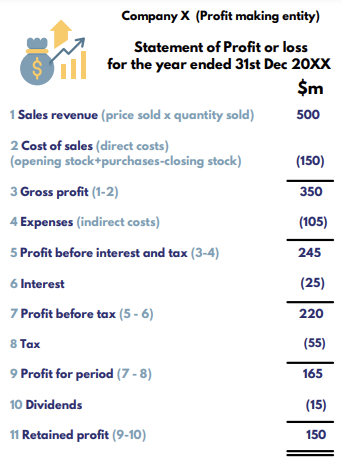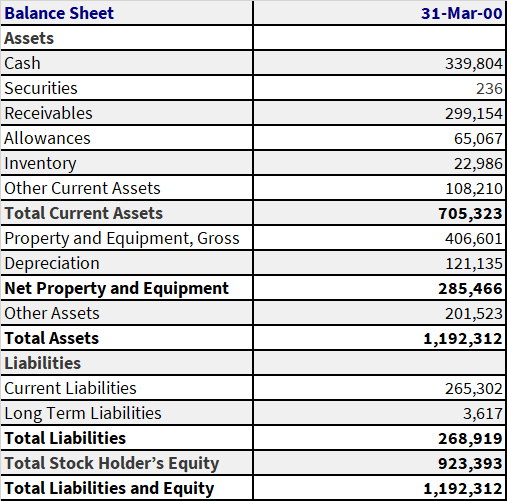BM 3.4 Final Accounts
1/20
Earn XP
Description and Tags
The purpose of accounts to different stakeholders (AO2) - Profit and loss account (Statement of Profit or loss) - Balance sheet - Different types of intangible assets (AO2) - Depreciation using the following methods (HL only) (AO2, AO4): - Straight line method - Units of production method - Appropriateness of each depreciation method (HL only) (AO3) - Apply Knowledge of the Profit & Loss Account (AO2 – Application) - Explain the structure and purpose of a profit & loss account (income statement). - Identify key components, including revenue, cost of sales, gross profit, expenses, net profit, and retained profit. - Analyze how profit & loss accounts are used to assess a business’s financial performance. - Perform Profit & Loss Account Calculations (AO4 – Calculations) - Accurately calculate key financial figures, including: - Gross profit = Revenue – Cost of Sales - Net profit = Gross Profit – Expenses - Retained profit = Net Profit – Dividends - Use financial data to compute and interpret profitability metrics. - Solve profit & loss account problems in business scenarios. - Methods of depreciation (AO2, AO4) (HL) - Appropriateness of each depreciation method: Straight line and unit of production (AO3) (HL)
Name | Mastery | Learn | Test | Matching | Spaced |
|---|
No study sessions yet.
21 Terms
(AO2,4) Depreciation (HL): Definition and Methods
The fall in the value of a non-current asset due to wear and tear and obsolescence (need to replace older assets with better technologies).
Straight Line Method
Units of Production Method
Straight Line Method: Definition and Formula
Distributes depreciation evenly over the expected useful lifetime of the non-current asset: the value of the asset falls by equal amounts annually.
Annual Depreciation = (Purchase Cost - Residual Value) ÷ Lifespan
Straight Line Method: Advantages, Disadvantages, and Appropriateness
a:
Simple to calculate/understand/predict ;
suitable for depreciating assets with a known useful lifespan ;
d:
Unrealistic, abstract ;
Omits the loss of efficiency or higher repair costs over time, unsuitable if functional life span cannot be accurately estimated ;
Units of Production Method: Definition and Formula
Allocates equal amount of depreciation to each unit production: measures depreciation based on asset usage.
Depreciation per unit = (Purchase cost - Scrap value) ÷ Expected units of production over lifetime
Units of Production Method: Advantages, Disadvantages, and Appropriateness
a:
More accurately reflects wear and tear ; suited for fluctuating production
d:
more cumbersome to calculate: need to calculate depreciation based on varying usage rates ;
expected units are subjective &^ inaccurate ;
many tax authorities reject this method for taxing purposes ;
Historic Cost
Purchase cots of non-current asset
Scrap Value/Residual Value
Expected worth of an asset at the end of its useful life
Life expectancy
Intended or expected period of time the asset will be used for
Statement of Profit or Loss: Contents
Company X (Profit or Non-profit entity)
Statement of Profit or Loss
For the year ended xst x 20xx //Date
Currency sign and unit at rightmost side
Sales Revenue (price sold * quantity sold)
Cost of sales (direct costs)
Gross profit
Expenses (indirect costs)
Profit before interest and tax
Interest
Profit before tax
Tax
Profit for period (net profit DO NOT USE NET PROFIT)
Dividends
Retained profit

Depreciation: Importance in Accounting
Provide a more accurate reflection of a company’s financial position
Relevant to government (tax purposes), banks, financiers
Decreases taxable income
Statement of Profit and Loss: Negative impact on net profit margin
Statement of Financial Position: Affect net assets, equity, and liabilities
Final Accounts: Purpose to Stakeholders (Managers, Employees, Shareholders, Financiers) (AO2)
Managers:
Measure performance of the business to organizational targets
Compare against competitors
Help with decision-making and strategic planning : assess whether the business has sufficient funds for new investment projects
Set budgets and targets for the future: Monitor business expenditure across various departments in the organization
Employees:
Gauge whether their jobs are secure: profitable business in solvency = + job security and promotional opportunities
Assist with negotiation process with labor unions: profitable and healthy business helps workers strengthen their case for pay rises
Shareholders:
Measure the value of the business and evaluate the business’s profitability trends
Calculate the return on their investment: profitability ratios
Determine dividends they receive
Decide growth and expansion prospects for the organization
Compare financial performances of different businesses to inform investment decisions: buying and selling shares
Financiers:
Evaluate the business’s stability and profitability: make investment decisions
Balance Sheet / Statement of Financial Position
Snapshot of the business’s financial health at a particular point in time.
The reporting date is same each year, usually the last day of the financial year/ Legally required by all firms for auditing purposes.
Profit and Surplus: Definition and Differences
Profit:
Profit-making businesses earn after all expenses have been paid for from gross profit
Profit-making entities distribute profits in the following ways:
Rewarding shareholders in dividends
Reinvesting profits back into the business for its own use: retained profit
Surplus:
What non-profit business earns after all expenses has been paid
Reinvest all profits back into the business for its own use: retained surplus
Profit and Surplus: How to Improve Gross Value
Increasing sales revenue: Increase selling price, increase sold quantities → marketing strategies
Reducing cost of sales: Use cheaper suppliers, buy in bulk for discounts
Reducing rent: Moving to a cheaper location
Install energy efficient machinery: Solar panels
Find cost-effective suppliers for insurance
Reduce use of above-the-line promotion (expensive) to below-the-line promotion
Specifically Surplus:
Increase funding: seek corporate sponsors, fundraising strategies
Seek volunteers: reduce staffing costs
Statement of Financial Position: Contents

(AO2) Intangible Assets: Definition and Types
Fixed, non-physical assets with monetary value.
Including:
Goodwill: Reputation, brand image, and established understanding of an organization: increases market value above physical assets.
Licenses: Gives a business legal rights to operate, use intellectual property, and access resources → Long term value
Patents: Official rights given to a business to exploit an invention or process for commercial purposes: bars competitors from using the same invention or process without acquiring a license
Copyrights: Give the registered owner legal rights to creative works of others. Without copyrights, using creative works commercially may lead to legal consequences.
Trademarks: Gives the owner exclusive commercial use of registered brands, logos, and/or slogans: prevents competitors from following suit, builds unique brand image
(AO2) Profit & Loss Account: Purpose
Measure Profitability: Metrics such as gross and net profit are indicators of the business’s profitability, can be used to assess manager’s performance
Evaluate Cost Management: Displaying of costs and revenue allows managers to evaluate their cost management
Support Decision-Making: Data informs financial decisions
Compare Performance: Information can be compared to competitors or past reports
Profit & Loss Account: Assessing a business’s financial performance
Trend Analysis
Compare PL account over multiple years to identify growth/decline.
Look for:
Rising revenue but falling profits → Cost control issues.
Declining gross margin → Higher COGS or pricing pressure.
Benchmarking
Compare ratios with industry averages or competitors.
E.g., A 10% net margin may be good in retail but low in tech.
(AO4) Calculating Key Financial Figures: Gross profit, profit for period, retained profit
Gross profit = Revenue - Cost of Sales (direct costs)
Profit for Period = Gross Profit - Expenses (indirect costs)
Retained profit = Profit for Period - Dividends
The purpose of accounts to different stakeholders (AO2)
Profit and loss account (Statement of Profit or loss)
Balance sheet
Different types of intangible assets (AO2)
Depreciation using the following methods (HL only) (AO2, AO4):
Straight line method
Units of production method
Appropriateness of each depreciation method (HL only) (AO3)
Apply Knowledge of the Profit & Loss Account (AO2 – Application)
Explain the structure and purpose of a profit & loss account (income statement).
Identify key components, including revenue, cost of sales, gross profit, expenses, net profit, and retained profit.
Analyze how profit & loss accounts are used to assess a business’s financial performance.
Perform Profit & Loss Account Calculations (AO4 – Calculations)
Accurately calculate key financial figures, including:
Gross profit = Revenue – Cost of Sales
Net profit = Gross Profit – Expenses
Retained profit = Net Profit – Dividends
Use financial data to compute and interpret profitability metrics.
Solve profit & loss account problems in business scenarios.
Methods of depreciation (AO2, AO4) (HL)
Appropriateness of each depreciation method: Straight line and unit of production (AO3) (HL)
Learning objectives